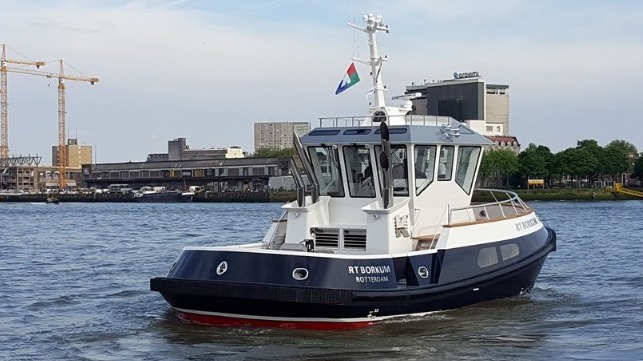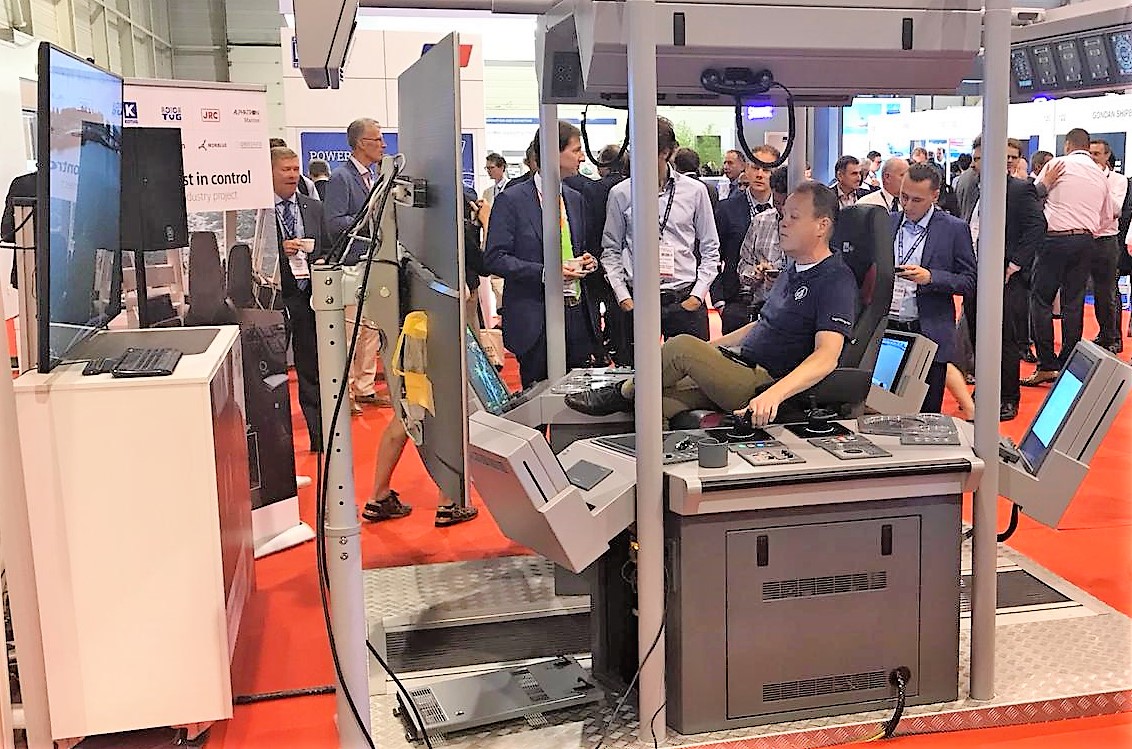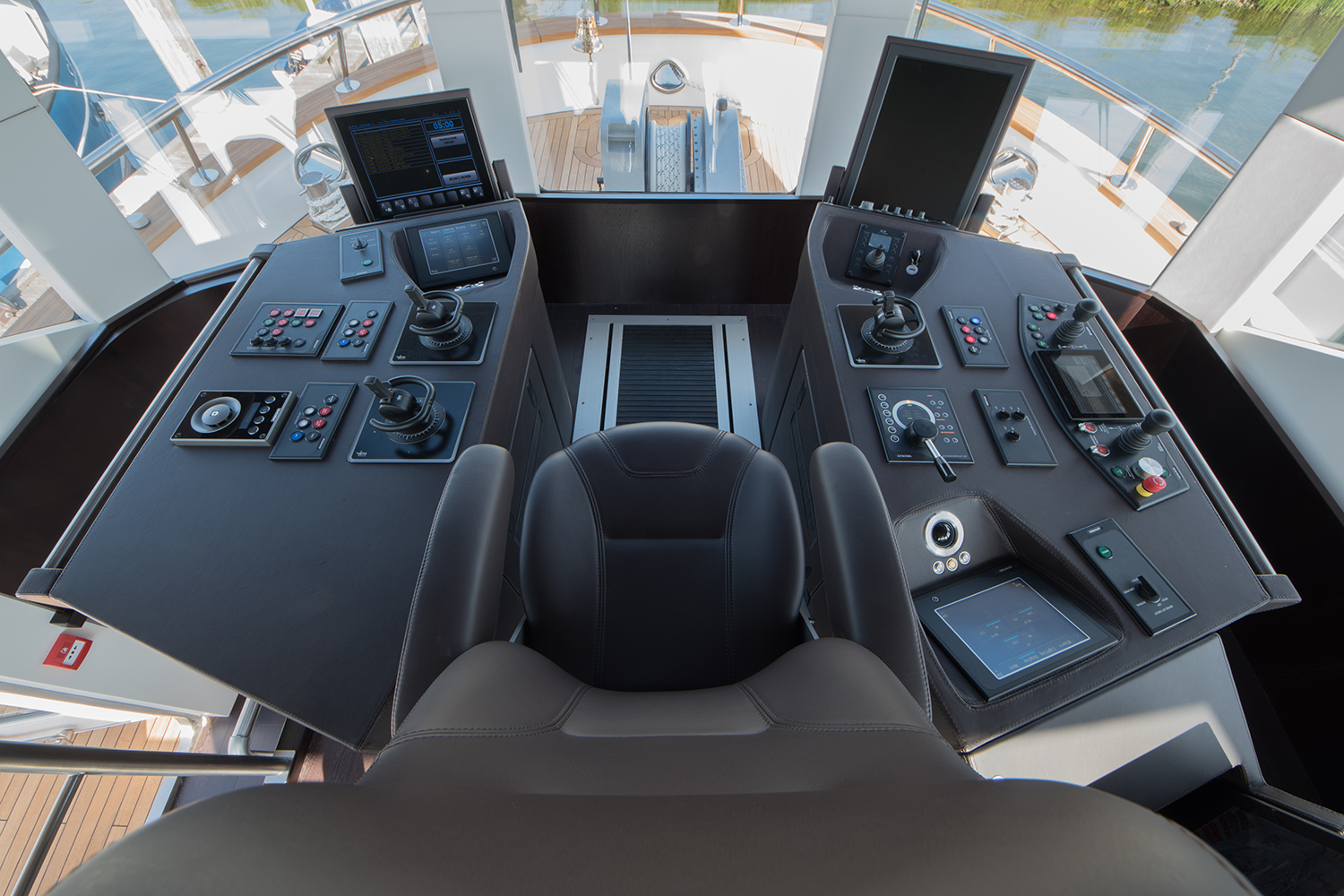Kotug demonstrates the sailing of the first remote controlled tugboat over a long distance today.
The RT Borkum was controlled from the International Tug, Salvage & OSV Convention and Exhibition (ITS) ITS in Marseille, while the RT Borkum was sailing in Rotterdam.
Unmanned shipping does not yet comply with current rules and regulations.
Therefore, rules need to be amended before tugs can actually start doing their tasks fully autonomous.
The RT Borkum was controlled remotely during the International Tug, Salvage & OSV Convention and Exhibition (ITS) ITS in Marseille, while sailing in Rotterdam.
The RT Borkum in her normal, manned configuration (file image courtesy Veth Propulsion)
A captain of Kotug took over the control of the tug via a remote secured internet line and camera images.
These cameras and controls of the tugboat were used on the demo consoles in Marseille.
At ITS (Kotug)
The joint-industry project’s stakeholders has received no external subsidy.
Stakeholders that contributed to this demo project :
- Rotortug: Owner of the RT Borkum
- Alphatron : Camera visualization and system integration in the consoles
- Veth : Steering and engine control system to take over from local console to remote control and vice versa
- OnBoard : conversion of the steering and engine control signal to internet protocol and vice versa
- M2M Blue: Stable data connection with VPN tunnel (4G and LAN connection combined)
- Kotug : Project management and supported MAROF student with Thesis “Remote controlled tug boat “
Aboard the RT Borkum (Kotug)
Kotug believes that unmanned remote controlled ships will be the first step to ultimately unmanned autonomous shipping.
Various simple operations in remote locations can already be done from remote controlled stations. Kotug uses its Rotterdam simulator for further testing of unmanned operation tasks.
The real time sensor technology makes it possible to give the remote control captain the situational awareness that is needed for safe operation.
Kotug presents a pioneering invention - using a drone to connect the towline to an assisted vessel.
This will drastically improve the safety margin of tug operations as this will avoid the need for manoeuvring in the so-called danger zone.
Combined with the drone technology to connect the towline, unmanned shipping is commercially and technically getting closer.
The Borkum was purpose-built for training and demonstrations, and is a miniaturized version of larger Kotug vessels.
Like all Rotortugs, she has three Z-drive thrusters, two forward and one aft, which provide added maneuverability and operational flexibility in harbor towing / escort towing roles.
In a statement, Kotug said that it expects unmanned remote controlled ships to be the first step to unmanned, autonomous shipping.
Simple operations in remote locations can already be done from remote-controlled stations, and Kotug is using its Rotterdam simulator for further testing of unmanned operation.
If a remote control system could be combined with drone technology to connect the towline, then unmanned towage is "commercially and technically getting closer," Kotug suggests.
However, the firm notes that regulations do not currently permit unmanned shipping.
Rules would need to be altered before tugs could operate without a human crew onboard, or (eventually) without a remote "captain" in constant control.
IMO is currently reviewing the regulatory requirements surrounding unmanned vessels, and has agreed on a definition of Maritime Autonomous Surface Ships (MASS) as an initial step.
Links :
- Port technology : Kotug Shows How Remotely Operated Tugs Can Work



No comments:
Post a Comment